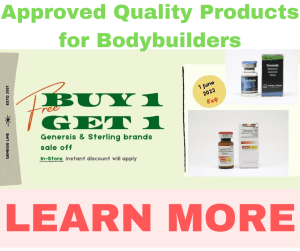Cold Immersion Therapy for Recovery


Ice immersion therapy, also known as cold immersion or cryotherapy, is a recovery technique that some bodybuilders use to reduce muscle soreness and inflammation after intense workouts.
Types of Cold Immersion Therapy
Ice immersion techniques can benefit bodybuilders as they may help reduce inflammation, promote recovery, and improve overall muscle performance. Here are some types of brutal immersion methods suitable for bodybuilders:
1. Cold Water Baths: Submerging yourself in a cold water bath or an ice bath can help reduce muscle soreness and inflammation after intense workouts. Water temperatures typically range from 50°F (10°C) to 59°F (15°C).
2. Cryotherapy Chambers: Cryotherapy involves standing in a cryotherapy chamber briefly while being exposed to frigid temperatures, often around -220°F (-140°C). This can rapidly reduce muscle soreness and improve recovery.
3. Cold Showers: Cold showers are a more accessible and convenient option for bodybuilders. You can alternate between hot and cold water during your shower or finish with a brief blast of cold water to help with muscle recovery.
4. Contrast Baths: Contrast baths involve alternating between hot and cold water immersion. This can enhance circulation, reduce muscle soreness, and promote recovery. For bodybuilders, it's essential to focus on the complex phase.
5. Ice Packs or Ice Massage: Ice packs or massages on specific muscle groups can help target sore areas. This can be particularly useful for localised muscle soreness and injuries.
6. Localized Cryotherapy: Some facilities offer localised cryotherapy using devices that deliver frigid temperatures to specific muscle groups, which can help reduce inflammation and soreness in targeted areas.
Check Out: Universities with Best Gyms In the U.S
Cold Immersion Procedure
Here's an essential procedure for ice immersion therapy:
1. Prepare the equipment:
◦ Fill a bathtub or container with cold water. The temperature can vary, but it's typically between 50°F (10°C) and 59°F (15°C). You can use ice or cold water from the tap.
◦ Have a timer or stopwatch ready to monitor the duration of the immersion.
2. Dress appropriately:
◦ Wear minimal clothing to ensure direct contact between your skin and the cold water. Swimsuits or shorts are often suitable.
3. Pre-immersion activities:
◦ Consider light physical activity or stretching to warm your muscles and increase blood flow. This can help prevent shock when you enter the cold water.
4. Immersion:
◦ Slowly enter the cold water, starting with your feet and gradually submerging your entire body. Try to relax and control your breathing.
5. Immersion duration:
◦ The optimal duration can vary, but common recommendations range from 10 seconds to 20 minutes. Beginners should start with shorter durations and gradually increase as they become accustomed to the cold.
6. Monitor your body:
◦ Pay attention to your body's response. Shivering is a normal reaction to the cold, but if you experience severe discomfort or any signs of hypothermia (extreme shivering, confusion, or numbness), exit the water immediately.
7. After immersion:
When the immersion time is up, slowly exit the cold water. Dry off and warm up using towels, warm clothing, or a blanket. Some people find it beneficial to engage in light exercise or stretching after ice immersion.
What You Need for An Ice Immersion
Cold immersion, such as cold water swimming or ice baths, requires some equipment to ensure safety and comfort. Here are some essential items:
1. Wetsuit or Drysuit: A good-quality wetsuit or drysuit is essential to keep your body insulated in cold water.
2. Neoprene Boots and Gloves: These help keep your extremities warm and protected.
3. Swim Cap: A neoprene swim cap can help keep your head warm and reduce heat loss.
4. Thermometer: A water thermometer can help you monitor water temperature and ensure it's safe for your cold immersion.
5. Safety Equipment: In case of emergencies, it's a good idea to have a safety float or buoy, as well as someone watching over you.
6. Warm Clothing: Have warm, dry clothes ready after cold immersion to avoid post-immersion cooling.
7. Timer or Watch: To keep track of your immersion time, as prolonged exposure to cold water can be dangerous.
8. Medical Kit: Just in case, it's wise to have a basic first aid kit nearby.
How Bodybuilders Gain from Cold Immersion Therapy
Cold water immersion therapy, such as ice baths or cold water immersion, can offer several potential benefits to bodybuilders:
Reduced Muscle Inflammation: Cold immersion can help reduce muscle inflammation and soreness, potentially speeding up recovery after intense workouts.
Improved Circulation
Cold exposure can promote blood vessel constriction and dilation, enhancing muscle circulation and nutrient delivery.
Enhanced Recovery
Cold therapy may help bodybuilders recover faster between training sessions, allowing for more frequent and productive workouts.
Pain Relief
Ice immersion can temporarily relieve muscle aches and joint discomfort associated with intense training.
Enhanced Endurance
Some athletes use cold therapy to improve endurance and tolerance to cold, which can be advantageous in certain sports.
Mental Toughness
Regular exposure to cold can help build mental resilience and discipline, which can be valuable for maintaining a consistent training regimen.
Caution During Cold Immersion
Cold immersion, such as cold or ice baths, can have potential risks and should be done cautiously. Here are some important considerations:
Gradual Exposure
Start with shorter periods of immersion and gradually increase the time to allow your body to adapt to the cold.
Monitor Temperature
Ensure the water temperature is not dangerously cold. Icy water can lead to hypothermia.
Know Your Limits
Pay attention to your body's signals. If you start shivering uncontrollably or feel intense discomfort, it's time to exit the cold water.
Supervision
If possible, have someone present to assist you or call for help if needed.
Pre-existing Conditions
If you have any medical conditions or are taking medication, consult a healthcare professional before attempting cold immersion.
Warm-Up and Warm Clothing
Warm up before immersing in cold water, and have warm clothing and blankets ready after the immersion.
Hydration and Nutrition
Ensure you're well-hydrated and have eaten appropriately before attempting cold immersion.
Safety Precautions
Be cautious of slippery surfaces around the immersion area to prevent accidents.
Alternatives to cold water immersion
Must Read: Why an Experienced Lifter Must Use A Coach?
Options for cold water immersion for various purposes can include:
Cold Compress
Applying a cold compress or ice pack to specific body areas for short durations can help reduce inflammation and relieve pain without submerging the entire body in cold water.
Contrast Bath
Alternating between hot and cold water immersion, typically in separate containers or using hot and cold packs, can be used for muscle recovery and circulation improvement.
Cryotherapy
Whole-body cryotherapy involves standing in a chamber with frigid air for a short time, which can provide some of the benefits of cold water immersion.
Cold Showers
Taking cold showers can help improve alertness, boost circulation, and increase tolerance to cold, though it's less intense than full-body immersion.
Ice Baths
Similar to cold water immersion but focused on specific areas, such as submerging your legs in an ice bath for muscle recovery.
Cooling Clothing
Specialized clothing with cooling properties can help regulate body temperature and provide a milder alternative to full-body cold immersion.
Cold Packs or Gel Wraps
Use cold packs or gel wraps on sore or inflamed body parts for localised relief.
Is There A Specific Time for Cold Baths?
The best time for ice immersion therapy, such as cold showers or ice baths, can vary depending on your goals and personal preferences. Some people prefer it in the morning to help wake up and boost alertness, while others find it more relaxing in the evening to unwind and improve sleep quality.
Ultimately, it's a matter of what works best for you and your schedule. Just be cautious not to do it right before bedtime if it makes it difficult to fall asleep, as the body needs time to warm up and return to a comfortable temperature afterwards.
Overall
In summary, cold water immersion can be a valuable tool for bodybuilders when used judiciously, primarily for reducing muscle soreness and aiding recovery. However, it should be integrated into their training regimen with care and consideration of calledferences and needs.
Related Article: ChatGPT and Other Avenues to Find Great Bodybuilding Coaches
Recent Posts
ACE-031: A Powerful Myostatin Inhibitor
ACE-031 is a synthetic peptide designed to block myostatin, a natural regulator of muscle growth.…
Decoding IGF-1 LR3: A Guide to its Benefits
IGF-1 LR3 (Insulin-like Growth Factor-1 Long Arg3) is a synthetic variant of IGF-1, a hormone…
AOD-9604: The Fat-Burning Peptide Explained
AOD-9604, along with the similar HGH Frag 176-191, is a peptide derived from Growth Hormone…
Understanding Trenbolone-Induced Cough (“Tren Cough”)
Trenbolone, a potent anabolic steroid, can sometimes cause “tren cough”—a sudden and intense coughing episode…
Creatine vs Myostatin: An Expert’s Analysis
Myostatin, a protein encoded by the MSTN gene, acts as a regulator of muscle growth.…
Raloxifene (Evista) 101: A Non-Surgical Solution for Gyno
Raloxifene, a selective estrogen receptor modulator (SERM), is one of the most valuable yet less…



